The Carrig Renewables Wind Farm is a seven-turbine development in Co Tipperary. MKO’s Project Communications team coordinated the project’s community engagement and public consultation processes.
The first step for the Project Communications Team was to devise a Community Engagement Strategy, a high-level document arising from the fee proposal which outlined the various stages of the community engagement process and laid out an estimated timeline for their delivery.
Once the client (AIR) had approved the Community Engagement Strategy, our team was able to begin the first phase of the engagement process, which was about identifying the key stakeholders. A stakeholder in this context is anyone likely to be impacted or affected by the project – near neighbours, landowners, community groups, etc.
These stakeholders can then be broadly split into two distinct groups:
- proximity residents (i.e., those living within 2km of the site); and
- those in the wider community (businesses, clubs, community groups, etc., plus local elected representatives).
Initial engagement with proximity residents had two stages: an initial leaflet drop to alert them to the project and a follow-up door-knock to discuss the project in more detail and respond to any questions or queries that residents may present.
In the case of Carrig, primary consultation began with a leaflet drop in early December of 2022. The leaflet itself contained an overview of the project plans, an estimated timeline for the development and contact details for the Community Liaison Officers (CLO), whose role is to serve as a link between the developers and the public and to field questions from the public on behalf of the developers.
For projects such as Carrig, MKO uses dedicated CLO phone numbers and email accounts, which we make publicly available to anyone wanting to get in touch.
The CLO’s role is to provide an open line of dialogue and communication between the project developers and the public. We will field questions and comments, refer to the developers or our internal specialists, and answer the query as thoroughly as possible.
Our dedicated GIS team then identified 60 occupied dwellings within a 2km radius of the proposed turbine sites. Each of these houses received a visit over two days in December. They were provided with further details about the project plans and the opportunity to ask questions or lodge concerns with the project team.
Our Project Communications team then set about devising plans for a Public Information Event (PIE), then set about devising plans for a Public Information Event (PIE), the hosting of which is a key component in the public consultation programme. A successful event involves presenting the project plans to the public in an open, transparent and proactive manner. The public is invited to attend to view the plans, ask questions and raise concerns.
The event was held in the local community hall in Carrig. It was advertised a week in advance in the local media, and representatives from MKO performed a leaflet drop in the lead-up to ensure the proximity residents were aware of the event. The event was attended by representatives of MKO’s Project Communications team, MKO Environmental specialists, and the developers themselves.
The event was held in an open format – information posters, site maps, technical drawings, etc., were displayed on boards on either side of the room, to allow attendees to view the information in their own time before introducing them to a member of the project team to answer specific questions or concerns they may have.
Photomontage booklets were also displayed, showing what the proposed wind would look like from various distances and angles once built.
An event management plan was devised and distributed to members of the project team An event management plan was devised and distributed to project team members before the event, detailing how to handle any potential conflicts that may arise on the day.
In the case of Carrig, the PIE was attended by a local group who strongly opposed the project. These were primarily residents living at or close to the minimum permittable distance from a turbine, concerned about the potential visual and noise impacts.
It is important for attendees to have the opportunity to express their views and be heard – our job is to facilitate that in a controlled setting.
Our inhouse Graphics team designed a dedicated project website containing information about the design plans, the Community Benefit Fund, an FAQ section, and contact details for the CLO. The website works with our in-person consultation and is a very important resource.
The Virtual Consultation Room (VCR) is an interactive online platform that hosts more detailed design plans, maps and project information. It is synchronised to go live on the website on the same day as the public event and hosts the same boards as are displayed at the event.
After the Public Information Event, it is important to keep the lines of communication open. Can feedback gathered from the public event inform the project design? Can the concerns of residents be meaningfully addressed? As more detailed plans are released, queries become more specific, and the information we supply needs to reflect that.
We keep on top of the flow of information up to the planning submission and on into the post-planning phase.


